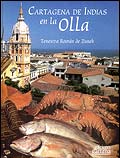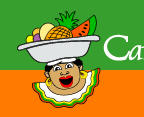|
Being Cartagena the most important port in South America, it was the entrance to this New World, "The Key of the West Indies" as a historian named the continent.
Diverse merchandises and personalities of every category from Marquis to slaves arrived and disembarked here.
In the formation of the Typical Food of Cartagena intervened mainly the three races: indigenous, spanish and black, which contributed to the formation of the city in every aspect. When the conquerors and colonizers arrived, they found all sorts of exuberant vegetation of plants and fruits unknown at the Old World and now are a part of many dishes of universal gastronomy.
The indigenous cuisine was very primitive, on three rocks they roasted and boiled their foods with no spices nor the splendor of the aztecs or incas, where they presented real banquets to Montezuma. Even though their influence leaves some dishes such as arepa, casabe or cazabi, buns or rolls, bitivity (a dish made of fermented corn), the cacao, the flour chocolate made of corn and cacao, they would count on yucca, guanabana, mamey, cacao, cherimoya, caimito, anon, corn, sweet potato, pineapple, melon, tomato, sweet chili, achiote, bijao or vixa, and coconuts which seems came floating from Polynesia. In animals we had the turkey, guartinaja, five species of rabbits, turtles, crabs, jaibas, hicoteas, and diverse fish.
The most important for the gastronomy of the Caribbean, in particular for Cartagena was the vision and stubbornness of the king Fernando de Aragón when organizing the second voyage of Columbus, a true expedition to the New World sent farmers and agriculturists with all sorts of fruits: cider, oranges, grapefruits, plums, parales, apples, lemons almonds, apricots, quince, sugar cane that came from the Canary Islands, wheat, barley, rice, rye, beans, chickpeas, lentils, kidney beans, garlic, olive oil, cattle and wool, hens, horses and donkeys. With them they took possession of the land in different parts of the New World, the Spanish influence penetrated in all the fields, and in the kitchen a new horizon was opened. From there we have names such as alfajor, alboronía, almojábana, bienmesabe, bizcocho, bollo, buñuelo, caspiroleta, chicharrón, empanada, jalea, mazamorra, lechón, lechona, turrón, olla, caldero, guiso, sopa, revoltillo, torta, sancocho. From the indigenous origin we have: yucca, batata, arepa, maiz, casabe, budare, and from the african continent we have: afunchado, bitute, candia, guando, guineo.
|



 |



